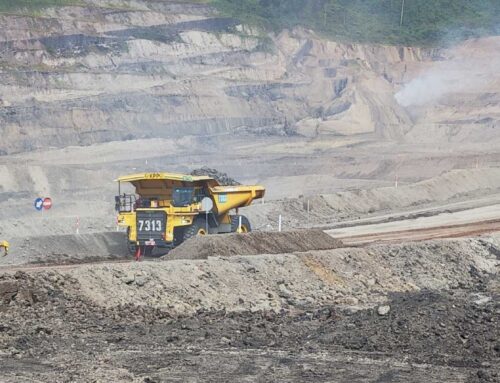European Union’s climate neutrality objective involves capturing between 300 and 500 million tonnes of industrial carbon by 2050.
“Carbon farming” is an incentive for the agricultural sector to make financial use of the natural carbon sequestration in soils.
In a communication on the innovative concept of a sustainable carbon cycle dating back to December 2021, the European Commission studied actions to develop an economic model linked to the storage of carbon in agricultural soils, and to promote a new industrial value chain for the sustainable capture, recycling, transport and storage of carbon.
The European Union’s climate neutrality objective involves capturing between 300 and 500 million tonnes of industrial carbon by 2050.

Under the “carbon farming” mechanism, land managers sell carbon credits linked to their agricultural storage on voluntary carbon offset markets to buyers wishing to reduce the carbon footprint of their own value chain.
The Commission’s report calls for the introduction of an ecological economic model that rewards the adoption of better land management practices.
The Commission believes that many existing good land management practices result in improved carbon sequestration and biodiversity benefits and can be strengthened. The report cites several examples:
- Afforestation and reforestation practices that respect ecological principles favourable to biodiversity,
- Agroforestry and mixed forms of agriculture combining woody vegetation and crop or animal production systems,
- The use of catch crops, cover crops, minimum crops and the reinforcement of topographical features,
- Targeted conversion of arable land to set-aside or of set-aside land to permanent grassland,
- Restoring peat bogs and wetlands.
Under the “carbon farming” mechanism, land managers sell carbon credits linked to their agricultural storage on voluntary carbon offset markets to buyers wishing to reduce the carbon footprint of their own value chain.
The agricultural and forestry sector is thus encouraged to strengthen practices that encourage the storage of carbon in agricultural soils.
However, for this agricultural carbon market to be developed on a large scale and to have an impact, a number of obstacles need to be removed.
- Profitability: the financial burden linked to the cost of agricultural storage practices and the uncertainty of revenues linked to the monetisation of carbon credits,
- The reputational risk associated with a lack of confidence in the reliability of standards on voluntary carbon markets
- The practical, on-the-ground implementation of verification mechanisms made difficult by the unavailability, complexity and cost of reliable monitoring, reporting and verification systems, and
- Lack of awareness of these mechanisms and inadequate training and advice services.
The aim is to ensure a high degree of transparency, environmental integrity and methodological standardisation to avoid any doubts about the quality of carbon credits from agricultural storage.
The Commission is once again demonstrating its ambition to be a pioneer in the regulatory certification of carbon absorption.
Standardisation of methods and controls, and adoption of a regulatory framework
To remove these barriers, the Commission’s roadmap includes standardising the methods and rules for monitoring, reporting and verifying the gains or losses associated with carbon sequestration, and promoting the adoption of a regulatory framework for the certification of carbon removals.
The aim is to ensure a high degree of transparency, environmental integrity and methodological standardisation to avoid any doubts about the quality of carbon credits from agricultural storage.
The introduction of a certification framework would make it possible to transparently identify agricultural carbon storage solutions that unambiguously and sustainably remove carbon from the atmosphere.
The Commission is once again demonstrating its ambition to be a pioneer in the regulatory certification of carbon absorption.
The Commission wishes to anticipate and inspire the planned development, under Article 6 of the Paris Agreement, of a robust and comprehensive accounting framework for international carbon markets.
Conclusion
The agricultural and forestry sector is a major asset in achieving Europe’s objective of climate neutrality by 2050 and ensuring the continent’s food security.
Both an emitter and an absorber of greenhouse gases, the sector is preparing to come under increasing regulatory pressure, to be included in the EU’s GHG emissions monitoring systems, and to see certain agricultural practices made even more financiarised.
About Positivéco
At Positivéco, we see new national and international CSR regulations as vectors for positive growth.
Our job: to improve the readability of your activities for better valuation.
Since 2009, we have been supporting financial institutions, public players, and listed and unlisted companies in the evaluation of their CSR policies, the production of their extra-financial reporting and the implementation of their climate investment and aid projects. Development.
Make an appointment today and find out how to meet the new requirements of economic transparency while serving the project of your company.









Contact us now!